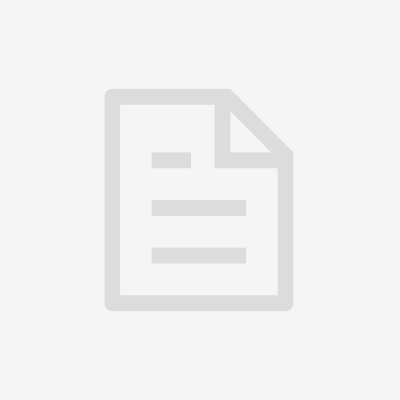Sep 09, 2021
Collection and preservation of eDNA from marine water samples
- Ana Ramón-Laca1,
- Abigail Wells2,
- Linda Park2
- 1Museo Nacional de Ciencias Naturales;
- 2NWFSC-NOAA

External link: https://doi.org/10.1371/journal.pone.0257773
Protocol Citation: Ana Ramón-Laca, Abigail Wells, Linda Park 2021. Collection and preservation of eDNA from marine water samples. protocols.io https://dx.doi.org/10.17504/protocols.io.bx4upqww
Manuscript citation:
Ramón-Laca A, Wells A, Park L (2021) A workflow for the relative quantification of multiple fish species from oceanic water samples using environmental DNA (eDNA) to support large-scale fishery surveys. PLoS ONE 16(9): e0257773. doi: 10.1371/journal.pone.0257773
License: This is an open access protocol distributed under the terms of the Creative Commons Attribution License, which permits unrestricted use, distribution, and reproduction in any medium, provided the original author and source are credited
Protocol status: Working
We use this protocol and it’s working
Created: September 09, 2021
Last Modified: September 09, 2021
Protocol Integer ID: 53108
Keywords: eDNA, marine, water, fisheries,
Disclaimer
DISCLAIMER – FOR INFORMATIONAL PURPOSES ONLY; USE AT YOUR OWN RISK
The protocol content here is for informational purposes only and does not constitute legal, medical, clinical, or safety advice, or otherwise; content added to protocols.io is not peer reviewed and may not have undergone a formal approval of any kind. Information presented in this protocol should not substitute for independent professional judgment, advice, diagnosis, or treatment. Any action you take or refrain from taking using or relying upon the information presented here is strictly at your own risk. You agree that neither the Company nor any of the authors, contributors, administrators, or anyone else associated with protocols.io, can be held responsible for your use of the information contained in or linked to this protocol or any of our Sites/Apps and Services.
Abstract
This protocol is designed for water collection from Niskin bottles and filtration at sea using reusable filter cups.
Aim: to collect and filter 2.5 L of water at each depth from each CTD cast and preserved the filter at room temperature in lysis buffer
Guidelines
Water should be filtered immediately after collection.
Only DNA-free forceps should touch the filter!
Materials
- DNA away
- Kimwipes
- gloves
- 69 oz Whirlpack bags (2.5 L is at 9.5” of the bag from the bottom)
- 2L pitchers (for whirlpack bags stability)
- utensils for getting membrane from filter (i.e. forceps)
- 500 ml filter cups with arubber stopper fitted with anadapter for filter cup
- mixed cellulose ester sterile filters (1 μm, 47 mm diameter) (Advantec® Cat. A100H047A)
- pump
- 3-port manifold
- tubing adaptors
- wastewater container carboy
- labeled tubes containing 2 ml of Longmires’s buffer
- bleach (5%) and bleach bucket
- distilled water
- 2 buckets (for bleach and rinsing)
- mesh bags
- drying racks
- bungees
- absorbent towelsµ
- distilled water from the evaporator onboard and from the lab
Filter cups cleaning and assemblage
Filter cups cleaning and assemblage
Set up wash station (two buckets, one with 0.5% bleach, one with clean distilled H2O)
Note
Replace bleach and water stations at regular intervals (at least every other day, 0.5% bleach = 1.2 L bleach in 20L bucket)
Place all used small items in a small mesh bag and the filter cups in a large mesh bag in bleach for at least 00:30:00
30m
Rinse the abovementioned items for at least 00:10:00
10m
Allow to dry on the drying racks
Wearing a fresh pair of gloves, mount filter cups with new sterile filter
Collection of water from Niskin bottles
Collection of water from Niskin bottles
Let the water from the hull (“surface water sample”) run for > 00:03:00 while the CTD is being deployed
3m
Collect 2 samples of2.5 L each of “surface water” for each CTD cast in 69oz whirlpack bags. Use pitchers for support and stability.
Once the CTD rosette has been brought back to the surface, water needs to be extracted from each Niskin bottle and transported into the lab for filtration.
We want to collect 2.5 L of water from each Niskin.
Wipe the spigot on the Niskin with DNAway to remove potential contaminants on the outside of the Niskin
Flush water (count to 10) from the Niskin to further reduce risk of contamination and collect 2.5 L L of water in a whirlpack bag and place in 2L pitcher
Include a sampling negative control by collecting 2.5 L of distilled H2O (at least daily)
Filtration of water samples
Filtration of water samples
Wipe working area with DNAway. Use a clean absorbant pad each day for the filtration station.
Switch on the pump and set vacuum in the middle range between-8 and -12 bars (keep an eye on the gauge & adjust if necessary)
Pour water from whirlpack bag (supported by pitcher) into the filter cup, repeat until finished (2.5L of water)
Using DNA-free forceps fold filter and place in pre-labeled tube pre-filled with preservative buffer (2 mL , Longmire Buffer in a 5 ml LoBind tube).
Protocol

NAME
Longmire lysis buffer
CREATED BY
Ana Ramón-Laca
975 ml double-distilled water
100 ml of 1 M Tris-HCL, pH 8.0
200 ml of 0.5 M EDTA, pH8.0
2 ml of 5 M NaCl
25 ml of 20% SDS (w/v) Filter the buffer with an autofill PES bottle top filtration device (sterile 500ml, 0.22 µm)
Filter 2.5 L of ship distilled H2O every time the cleaning distilled H2O is replaced as a sampling negative control
Every 2-3 days 2 L of lab diH2O should be filtered as sampling negative controls
Note tube label in notes. Also note time filtered, membrane type, place filtered (field/lab, which lab), etc.
Store samples at room temperature away from UV light
